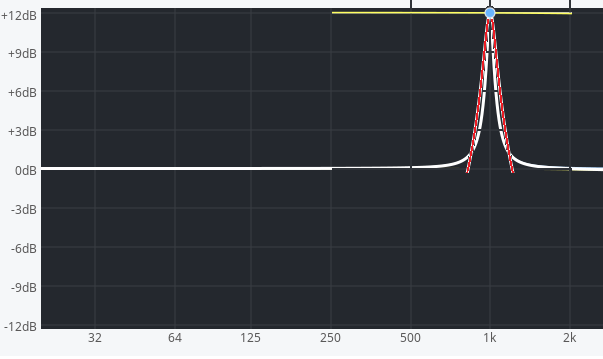Apologies if this has been asked before, but could’t find any info. Are these Butterworth filters?
Purely looking at the visual preview (the graphs that Roon presents) : yes, those are definitely following Butterworth behaviour.
I have not done any verification measurements, though. But this is pretty basic stuff, I’m pretty sure Roon does well here :).
This is likely better suited for ‘feature requests’…but : It would be nice if a slider for Q factor was added, here.
Just like in PEQ. Summing butterworth filters is rarely (dare I say never) the optimum solution, when speaking about loudspeaker filtering…
Thanks for the confirmation - they looked that way to me too. I need L-R filters so I can simply cascade two Butterworths. Some grid lines on the graphs would be nice for exacting work, but the graphs as they are are quite useful.
Regarding Q - any idea how Roon calculates Q? - my experience is that Q on one piece of software may not be the same as on another (applies to hardware, too). Rane did a nice piece on this - quite old, but still valid I think.
Sorry for the delay. Sure, if you need Linkwitz-Riley, then you can cascade identical Butterworth sections.
For other configurations, you’ll be out of luck with (current) Roon.
Regarding your Q question : not sure how to answer that. Q is very strictly defined; its definition leaves no room at all for interpretation (and applies to a lot of other scientific areas too, not related to sound or electronics in any way).
So : Q is simply the ratio of stored vs dissipated energy in the device.
In acoustics. the easiest way to define that is F(center) / F (-3dB bandwidth).
And that’s exactly the convention, that Roon follows.
Perhaps you want to know if they take the -3dB points of the PEQ bell curves (=sum of bandpass response + original source), or the -3dB points of just the bandpass function it was based on.
That answer would be : they take the -3dB point of the summed bell curves. See pic below.
Red is a bare bandpass filter @1000Hz, Q=10.
White is a peaking EQ, with the same parameters.
The PEQ response is narrowest. It would have been widest instead, if they took -3dB points of the bare bandpass filter.

Please let me know if this answers your question; I’m not sure if I understand what you needed to know.
(I have no inside knowledge of Roon’s maths btw, and nothing was checked by measurements. Just looking at the graphical representation in the UI).
Thanks for your very comprehensive answer, yes it has answered my question.
I was particularly interested in how Roon implemented Q when it comes to shelving filters. I’m a long time JRiver user and it doesn’t implement Q (for shelving filters) in its DSP quite as one might expect. Full explanation is here.
I have Linkwitz LX521 active dipole speakers so needed to implement the required x-overs and eq. The original DSP for these speakers was done using the MiniDSP platform and porting the requirements to a different DSP system is not always that straightforward.
I’ve been able to implement the requirements in Roon and the graphs look good to me. From a purely subjective standpoint it sounds correct, too. I have a MiniDSP unit so I can do some measurements to compare and also compare it to my JRiver implementation.
I would also like to be able to implement a low frequency cut off filter (eg LR-4@12Hz to limit woofer excursion). The lowest frequency that can be set in Roon is 20Hz.
One other thing that would be useful in Roon would be able to cut and paste Biquad coefficients. Entering manually is very tedious and they don’t generate a graph either.
Once again, thanks for your help - much appreciated.
You are very welcome. I’m sure you understood by now, but for shelves that would be somethink like:
If Q=0.707, then both sides of the passband are maximaly flat. The shelving function only just has no overshoot to the negative side. (Go a tiny bit higher, and it’ll overshoot).
If Q=0.5 or lower, the resonance will no longer be periodic. Etc. Sure you got that.
I doubt if it is useful to set your highpass any lower than 20Hz (20Hz is already quite a task for 2 free air 10inches; even for those nice Seas’es).
But if you insist : wouldn’t that be possible to set that up as biquads ?
(Sure, the 20Hz limitation in software isn’t useful, I agree).
But… Wow, that must be a heck of a project. Setting up Roon to act as a 4 way crossover :). I’ve never tried that (and doubt if I would trust a PC for such things…), but that really does not like a user-friendly thing to set up…
Very nice speakers by the way, congrats ! I already have 5 of these tweeters from a previous project; almost tempting to buy the rest 

 .
.
This topic was automatically closed 365 days after the last reply. New replies are no longer allowed.